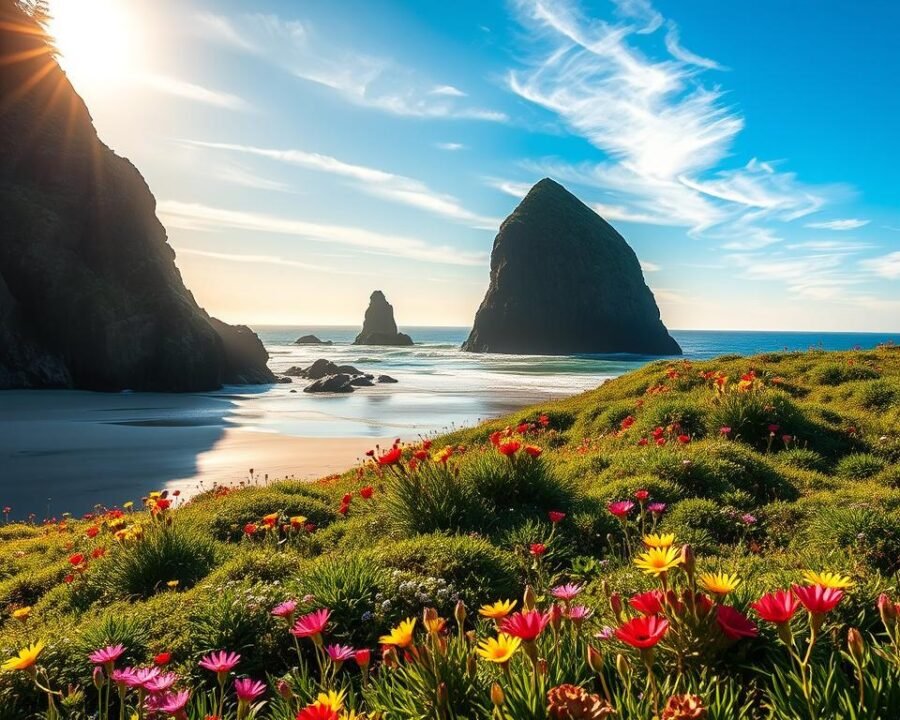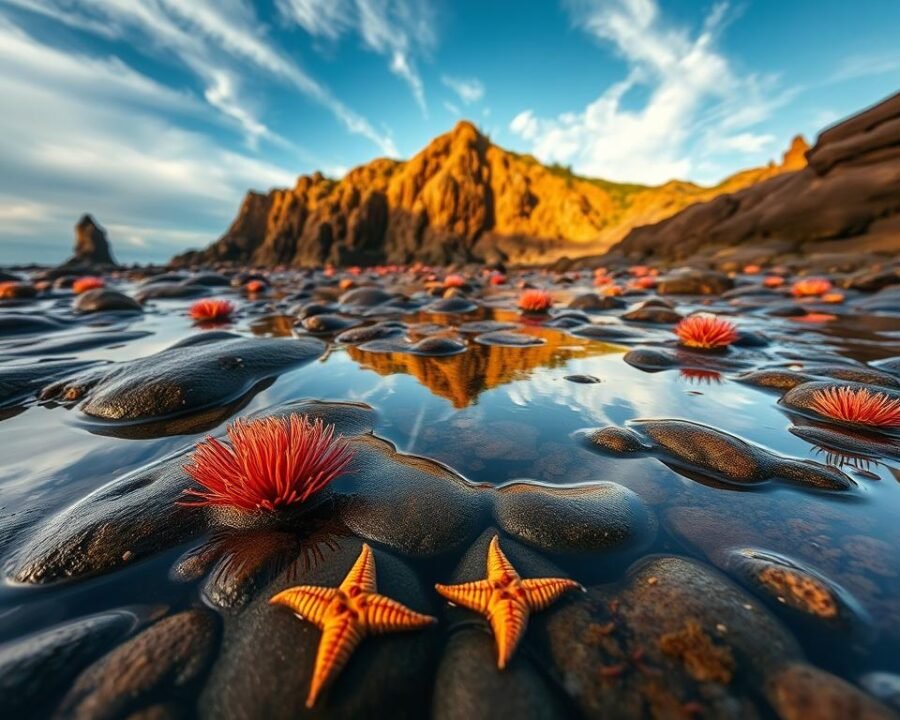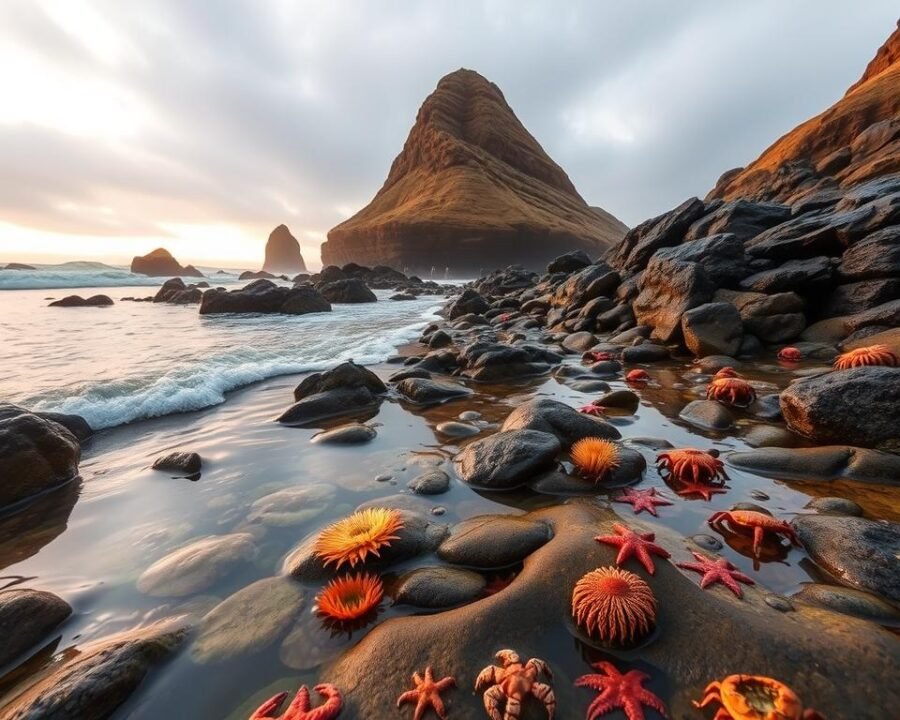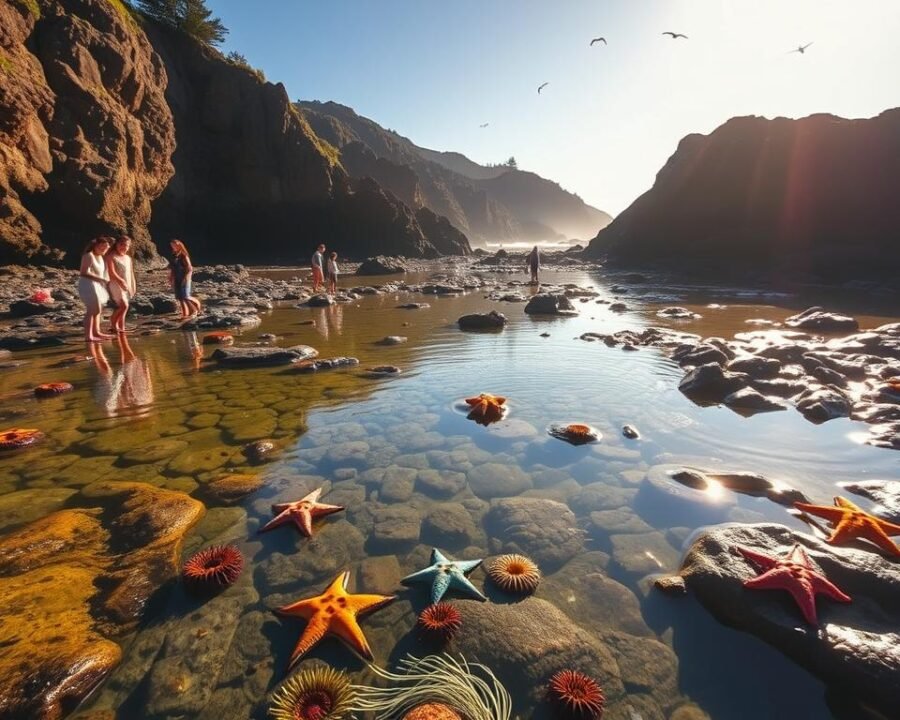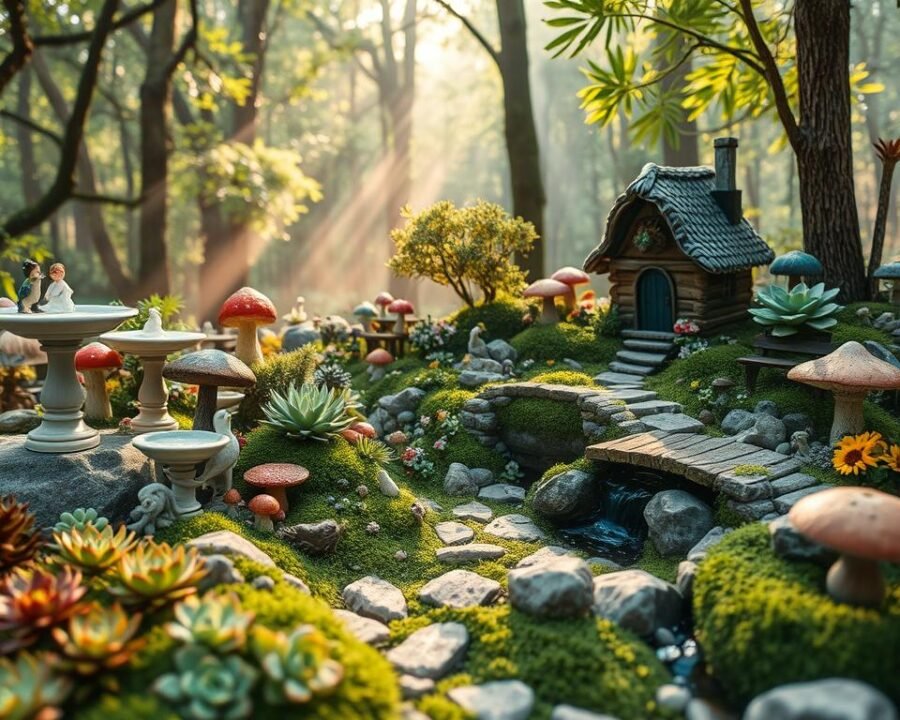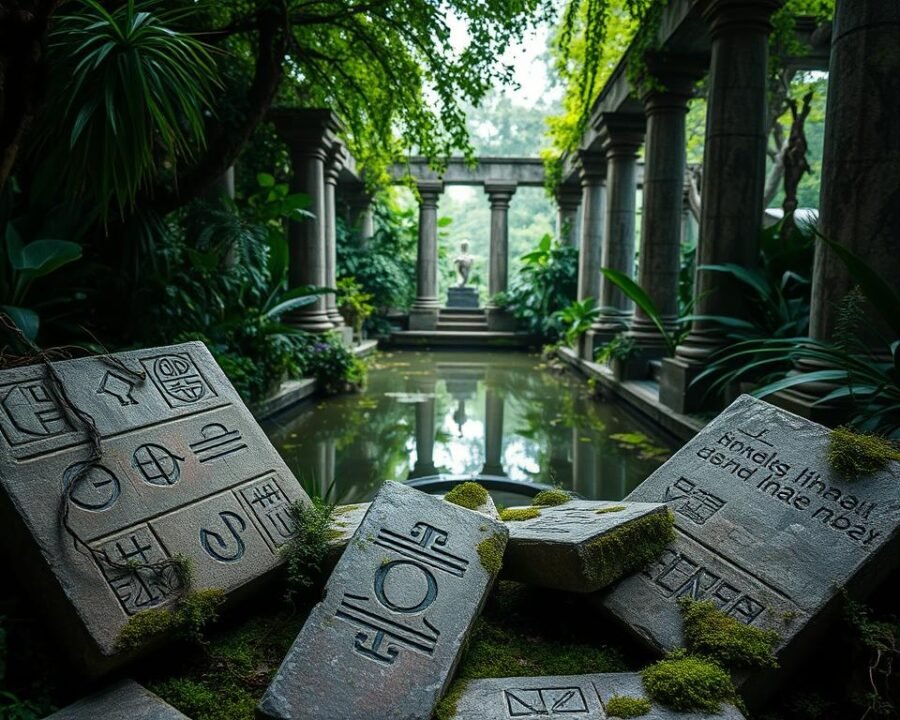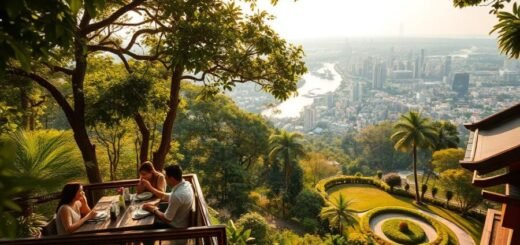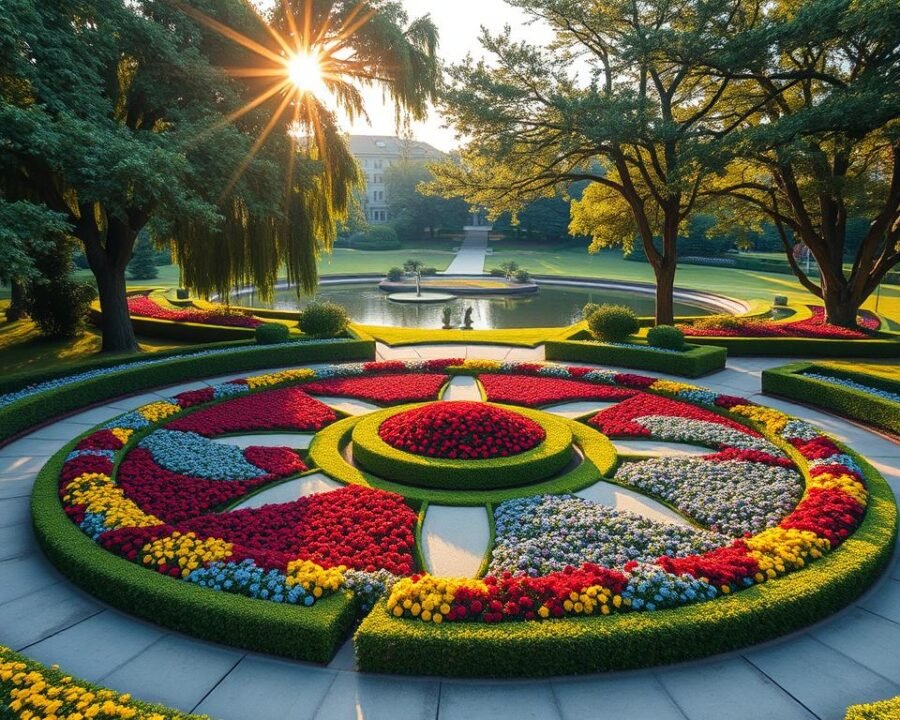Explore the Wonders of Cape Kiwanda Marine Garden

Welcome to Oregon’s Pacific coastline! Here, you’ll find Cape Kiwanda State Natural Area nestled among sand dunes and cliffs. It’s a place full of adventures and stunning views.
Imagine standing by the Pacific, hearing waves and seagulls. The Cape Kiwanda Marine Garden is a mix of nature’s wonders. You can surf, kayak, hike, or watch birds. For more on this Oregon spot, check out our guide on exploring Cape Kiwanda State Natural Area.
Key Takeaways
- Discover the diverse adventures offered by Cape Kiwanda State Natural Area
- Explore the natural beauty of the Oregon Pacific coastline
- Learn about the various activities available, from surfing to birdwatching
- Understand the best times to visit for whale watching
- Find out why Cape Kiwanda is suitable for both beginners and experienced surfers
tag.
6. Keyword Placement Matrix: We will check the keyword use to keep it under 2%.
7. Readability: We will make paragraphs smaller and aim for an 8th & 9th-grade reading level.
8. Text Size: We will pay attention to the recommended text size.
Let’s start working on Section 2’s content.
## Step 1: Introduction to Cape Kiwanda Marine Garden
For an unforgettable visit, Cape Kiwanda Marine Garden is a top choice. It’s on the Oregon coast, blending natural beauty with outdoor fun for all.
## Step 2: Why Visit Cape Kiwanda?
Cape Kiwanda State Natural Area is perfect for outdoor lovers. It offers water sports, birdwatching, hiking, and tide pool exploration. Its diverse ecosystems and history attract both nature fans and adventure seekers.
## Step 3: A Brief History of the Marine Garden
The Cape Kiwanda Marine Garden has a rich history. It was important to local tribes and early settlers. Knowing its history enriches the visit, showing the value of preserving these natural and cultural gems.
Here’s the content for Section 2:
Introduction to Cape Kiwanda Marine Garden
For an unforgettable visit, Cape Kiwanda Marine Garden is a top choice. It’s on the Oregon coast, blending natural beauty with outdoor fun for all.
Why Visit Cape Kiwanda?
Cape Kiwanda State Natural Area is perfect for outdoor lovers. It offers water sports, birdwatching, hiking, and tide pool exploration. Its diverse ecosystems and history attract both nature fans and adventure seekers.
Visitors can enjoy a variety of activities, from kayaking and tide pool exploration to simply taking in the breathtaking views.
A Brief History of the Marine Garden
The Cape Kiwanda Marine Garden has a rich and fascinating history. The area has been a significant spot for both the local indigenous tribes and early settlers.
Understanding its history adds depth to the visitor’s experience, highlighting the importance of preserving such natural and cultural treasures. The marine garden is not just a natural wonder but also a place of historical significance.
Unique Features of the Marine Environment
The marine environment at Cape Kiwanda is a treasure trove of biodiversity. It offers a unique mix of ecosystems. These support a wide range of marine life. As we explore this marine garden, we see how different species and their habitats are connected.
Diverse Ecosystems Found Here
Cape Kiwanda Marine Garden is home to diverse ecosystems. These include tide pools, kelp forests, and sandy beaches. These ecosystems work together to keep the marine environment balanced.
Tide pools are especially fascinating. They are found in the intertidal zone, where sea meets land. Marine biologists say, “The tide pools at Cape Kiwanda show how diverse and resilient marine life can be.”
The Importance of Tidal Zones
The tidal zones at Cape Kiwanda are not just beautiful. They are also key to the marine ecosystem. These areas are home to many species that adapt to the changing tides.
The importance of tidal zones is huge. They provide a home for many marine organisms. From anemones and starfish to crabs and mollusks, they all live here. Exploring these areas reminds us of the delicate balance of the marine environment.
“Tidal zones are among the most dynamic and diverse ecosystems on the planet, supporting a rich array of marine life.” –
By understanding and valuing these unique features, we can help protect the Cape Kiwanda Marine Garden for the future.
Wildlife You Can Encounter
At Cape Kiwanda, you’ll find many fascinating marine creatures and birds. It’s a top spot for nature lovers. The area’s varied ecosystems support a wide range of wildlife, from the tidal zones to the marine gardens.
Common Marine Species to Observe
The tide pools at Cape Kiwanda are home to many marine species. You can see:
- Anemones
- Starfish
- Crabs
- Mollusks
These creatures live in the tidal zones, where fresh and saltwater mix. Exploring the tide pools is exciting. For more marine life, whale watching near Portland is also worth checking out.
Birdwatching Opportunities in the Area
Cape Kiwanda is great for birdwatchers too. It attracts many bird species, including:
- Brown pelicans
- Black oystercatchers
- Migratory birds that stop over in the area
The area’s unique location and ecosystems support this diversity. Watching these birds in their natural habitat is unforgettable.
Activities to Enjoy at Cape Kiwanda
Cape Kiwanda is a special place where the sea meets the land. It’s perfect for those who love adventure. Here, you can enjoy many activities that let you dive into its natural wonders.
Tide Pool Exploration
Visiting the Cape Kiwanda Marine Garden is a must. It’s famous for its tide pools. These pools are filled with seawater at low tide and are full of life.
They are home to anemones, starfish, and crabs. Tide pool exploration is fun for everyone. It’s a chance to see the amazing creatures of the sea up close.
Kayaking Adventures Along the Shore
Cape Kiwanda is great for kayaking adventures. The calm waters are perfect for paddling. You can explore the coastline and maybe see some marine life.
Kayaking is a great way to see the beauty of the marine garden. It’s also a good workout. If you like cape kiwanda hiking trails, you can also explore the area on foot.
There’s more to do at Cape Kiwanda. You can surf or paddleboard too. There’s something for everyone, no matter what you like to do.
Best Times to Visit
Knowing the best times to visit Cape Kiwanda Marine Garden is key for a great trip. The garden offers something special all year, but the best time varies.
Summer (June to September) is the best for warm, dry weather. It’s perfect for exploring tide pools and kayaking.
Seasonal Highlights
Every season at Cape Kiwanda has its own charm. Spring is lush and great for birdwatching as birds migrate back.
Summer is warm and ideal for beach fun and exploring the tidal zones.
Autumn is peaceful with fewer visitors, perfect for a quiet visit. Winter is cooler and wet, but offers stunning landscapes and marine life in the tidal pools.
Weather Considerations
The weather at Cape Kiwanda changes a lot. Summer is warm and dry, with highs in the 70s and 80s Fahrenheit.
Spring and autumn are mild, with temperatures from the 50s to 70s Fahrenheit.
Winters are cool and wet, with lots of rain. Always check the weather forecast and pack right to enjoy your visit.
Safety Guidelines for Visitors
Cape Kiwanda Marine Garden is a stunning place, but it needs our respect and caution. Knowing the safety rules is key to a safe and fun visit for everyone.
First-Aid Preparedness
Being ready for emergencies is very important. Always carry a basic first-aid kit and know how to use it. You might get cuts from rocks or marine life, so antiseptic wipes and bandages are a must.
- Antiseptic wipes
- Bandages
- Pain relievers
- Antihistamines for allergic reactions
Wildlife Interaction Protocols
Meeting wildlife at Cape Kiwanda can be exciting, but we must do it right. We should keep a safe distance from marine animals and never feed or touch them. This helps keep their natural behavior and habitat safe.
- Maintain a safe distance from wildlife.
- Never feed or touch marine animals.
- Be aware of your surroundings and watch for warning signs.
Since 2009, there have been at least seven deaths at Cape Kiwanda from falls into the rocky ocean. New fenced walkways have been built to make it safer to see the views. We must stay on the paths and follow all safety signs.
Respecting nature’s power and following safety guidelines is key to enjoying Cape Kiwanda while preserving its beauty for future generations.
Summary of Safety Guidelines
To sum up, safety at Cape Kiwanda Marine Garden means being ready with a first-aid kit, respecting wildlife, and staying on paths. By following these tips, we can have a safe and fun visit.
| Safety Measure | Description |
|---|---|
| First-Aid Kit | Carry a basic kit with essentials like antiseptic wipes and bandages. |
| Wildlife Respect | Keep a safe distance and do not touch or feed marine animals. |
| Stay on Paths | Use designated walkways and follow safety signs. |
By following these safety guidelines, we can enjoy the beauty of Cape Kiwanda Marine Garden while staying safe.
Educational Programs and Tours
At Cape Kiwanda Marine Garden, we have educational programs to teach about marine life and culture. These programs help visitors understand and appreciate our marine world.
Guided Tours Available
Our tours are led by experts who share interesting facts about the marine garden. You can see the tidal pools and learn about the different ecosystems. For more, check out our guide on exploring Oregon coast tide pools to learn more about marine life.
As one of our guides once said,
“The marine garden is a living classroom, where every visit can reveal something new and fascinating about the natural world.”
Many visitors leave with a deeper respect for the sea.
Workshops for Kids and Families
We have interactive workshops for kids and families. They’re fun and teach about marine life and conservation. You can touch tide pool creatures and play games that teach about marine conservation.
| Workshop Type | Age Group | Description |
|---|---|---|
| Tide Pool Exploration | 6-12 years | Hands-on experience exploring the tidal pools and learning about marine creatures. |
| Marine Conservation | 8-16 years | Educational games and activities focused on the importance of marine conservation. |
Join us for a fun and educational time at Cape Kiwanda Marine Garden. Our programs are fun for all ages and teach us to respect our marine world.
Nearby Attractions and Amenities
Beyond the marine garden’s stunning natural beauty, the nearby locale offers a plethora of experiences that enhance our visit.
Local Restaurants and Cafés
Visiting Cape Kiwanda Marine Garden lets us enjoy fresh seafood and local cuisine. We can try dishes like freshly caught fish and other local specialties. This makes our dining experience unforgettable.
The local eateries not only offer delicious meals but also provide a chance to interact with the community. We can learn more about the area’s culture and way of life.
Other Natural Sites to Explore
The area is also home to other natural sites worth exploring. The Nestucca Bay National Wildlife Refuge is a notable destination. It offers a chance to observe wildlife in their natural habitats.
Exploring these nearby natural sites helps us appreciate the region’s ecological diversity. It also highlights the importance of conservation efforts in preserving these areas for future generations.
Conservation Efforts at Cape Kiwanda
The beauty of Cape Kiwanda comes from nature and hard work in conservation efforts. The Cape Kiwanda State Natural Area is a special place that needs careful care and protection.
Many people and groups work together to protect Cape Kiwanda. Local organizations are key in these efforts. They work hard to keep the natural world safe.
The Role of Local Organizations
Local groups are very important for Cape Kiwanda’s conservation. They team up with state and local governments to protect the area. They also teach people why it’s important to save this special place.
These organizations do many things to help. For example, they’ve worked on fixing the tidal zones. This is important for the sea life in the area.
| Initiative | Description | Impact |
|---|---|---|
| Habitat Restoration | Restoring tidal zones and marine habitats | Improved biodiversity |
| Wildlife Monitoring | Tracking marine species and their habitats | Enhanced understanding of ecosystem health |
| Educational Programs | Educating visitors about conservation | Increased awareness and community engagement |
How You Can Help
When you visit Cape Kiwanda, you can help by being careful. Follow the rules and respect the nature. Small actions like staying on paths and not littering help a lot.
You can also support local efforts by joining tours and educational programs. These help fund conservation work. By being mindful and participating, you help keep Cape Kiwanda beautiful for others to enjoy.
Conclusion: Embrace the Beauty of Cape Kiwanda
As we wrap up our journey through the Cape Kiwanda Marine Garden, we invite you to see its natural beauty. This place is full of diverse ecosystems, rich wildlife, and exciting adventures. It’s a top spot for anyone who loves the outdoors.
Visiting the Marine Garden
At Cape Kiwanda, you can explore tide pools or go kayaking. There’s something for everyone. Take a moment to appreciate this delicate ecosystem and its importance for the future.
Respecting Nature
When you visit the Cape Kiwanda Marine Garden, remember to respect nature and its creatures. This way, we can keep this beautiful place a source of wonder for years to come. We hope this guide has inspired you to visit and appreciate Cape Kiwanda. Let’s work together to protect and preserve this special place.
FAQ
What are the best times to visit Cape Kiwanda Marine Garden?
The best times to visit Cape Kiwanda Marine Garden are during low tide. This makes the tide pools easier to access. Spring and fall are also great, with mild weather. Always check the tide charts and weather forecasts before you go.
What activities can we enjoy at Cape Kiwanda?
At Cape Kiwanda, we can explore tide pools, go kayaking, and hike. We can also see the unique ecosystems and diverse wildlife. It’s a great place for outdoor fun.
Are there any guided tours available at Cape Kiwanda?
Yes, we offer guided tours at Cape Kiwanda. These tours help us learn about the marine environment and its creatures. Knowledgeable guides will show us the marine species and birds that live here.
What safety precautions should we take when visiting Cape Kiwanda?
When visiting Cape Kiwanda, know the tide times and weather. Be aware of your surroundings and keep a safe distance from wildlife. Also, bring a first-aid kit and learn how to safely interact with wildlife.
Can we kayak in the Cape Kiwanda Marine Garden?
Yes, kayaking is a fun activity at Cape Kiwanda. We can paddle along the shore and see the marine garden’s features. Remember to check the tide times and weather, and follow safety guidelines from park rangers.
What are some of the unique features of the Cape Kiwanda Marine Garden?
The Cape Kiwanda Marine Garden has diverse ecosystems, including tidal zones. We can see sea stars, anemones, and other creatures in the tide pools. It’s a unique marine environment.
Are there any local organizations working to conserve Cape Kiwanda?
Yes, local organizations, including park rangers and conservation groups, work to conserve Cape Kiwanda. We can help by respecting the environment, following park rules, and joining beach cleanups and conservation activities.
What are some nearby attractions to visit?
Nearby, we can visit local restaurants and cafes, and other natural sites like the Three Capes Scenic Drive. Exploring the area lets us enjoy the Oregon coast’s natural beauty.
